Popular games published by company Brøderbund Software
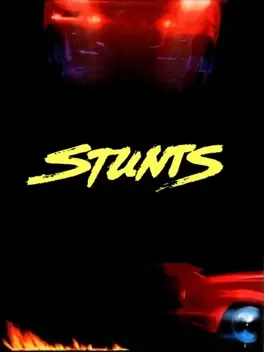
Stunts (also known as 4D Sports Driving) is an early 3D racing video game developed by Distinctive Software, Inc.. The game places emphasis on racing on stunt tracks and features a track editor, it is clearly influenced by the earlier arcade game Hard Drivin' and has many similar elements to the game Stunt Driver which was released around the same time. In Stunts, players race a lap around the circuit, with the aim of completing the lap as quickly as possible without crashing. However, these laps often feature special track areas such as loops, jumps (including over tall buildings), slalom roads and corkscrews. The game area is restricted by a large fixed size square area defined and surrounded by a fence which the game is designed to prevent the player from leaving. Players can either race against the clock or choose between six different opponents; there is no support for real-time multiplayer. Stunts features 11 different drivable cars, with either automatic or manual transmission. Replays of races can be saved and reviewed. There are four camera views available during replay and actual driving, and the dashboard is an optional overlay on all views. It is also possible to continue the race from any point in the replay, however the time for that race will not be recorded. Another major feature of the game is the built-in track and terrain editor which allows the user to design arbitrary new tracks or modifications of existing tracks.[2] The cars can drive on paved roads, gravel roads, icy/snow roads, and grass if driving off the track — which all offer different levels of grip. The game has a relatively advanced pseudo-physics engine for its time which can simulate oversteer and understeer, grip is also proportional to the banking of a curve. The game features a 3D engine with flat shading and no textures, it uses polygonal graphics for most objects, including trees and road signs, there are few sprites. The resolution is 320×200 with 256 colors. There is an option to select high and low detail. The game is written for DOS and executes in real mode.[3] Stunts includes a form of copy protection. Each time after running the program, players must complete a specific phrase found in the game manual before being allowed to race. If the player fails to complete the phrase three times, the next race will still load. However, approximately four seconds into the race, the player is informed that he or she did not deactivate the car's security system, the car crashes, and the player is returned to the main menu.
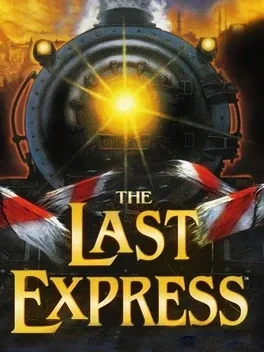
A point-and-click adventure game that takes place on a European train shortly before the outbreak of World War I. The game attempts to simulate real time with a non-linear story and dozens of fully voiced characters.
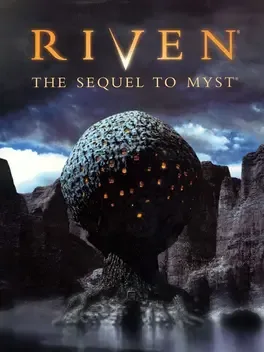
Prepare to enter a world "torn asunder" by timeless, unresolved conflicts--a world of incomparable beauty, intrigue, and betrayal. Prepare to go to Riven. Journey through vast, awe-inspiring landscapes, where clouds sit nestled in a deep blue sky and the rolling sea waters shimmer from bright morning sunlight. But be forewarned: nothing is quite as it seems.
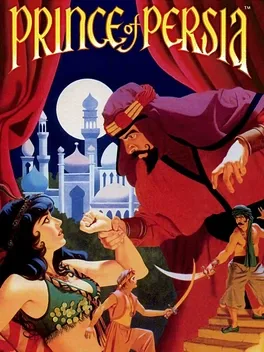
The DOS port of Prince of Persia. Prince of Persia is a cinematic platform game originally developed and published by Broderbund for the Apple II in 1989. Taking place in medieval Persia, players control an unnamed protagonist who must venture through a series of dungeons to defeat the evil Grand Vizier Jaffar and save an imprisoned princess. Ported to a wide range of platforms after the original Apple II release, it is believed to have been the first cinematic platformer, inspiring many games in this subgenre.
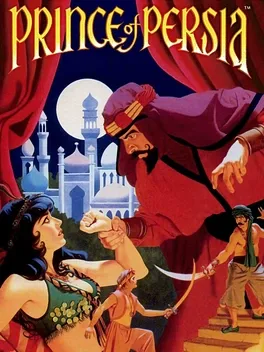
The game is set in ancient Persia. While the sultan is fighting a war in a foreign land, his vizier Jaffar, a wizard, seizes power. Jaffar's only obstacle to the throne is the Sultan's daughter (although the game never specifically mentions how). Jaffar locks her in a tower and orders her, under threat of execution, to become his wife. The game's nameless protagonist, whom the Princess loves, is thrown into the palace dungeons. The player must lead the protagonist out of the dungeons and to the palace tower, defeating Jaffar and freeing the Princess in under 60 minutes. In addition to guards, various traps and dungeons, the protagonist is further hindered by his own doppelgänger, an apparition of his own self that is conjured out of a magic mirror.

The game is a horizontally scrolling shooter set over a number of World War II missions. The player starts each mission by taking off from an aircraft carrier, which he/she has to protect from attacks by Japanese planes. The goal is to defeat the Japanese by destroying enemy bunkers, turrets and barracks on a series of islands and killing enemy soldiers either with bombs or by machine gun. The weapons to complete these objectives, besides machine guns, are a limited number of bombs, rockets and torpedoes. On some missions, the player must also sink Japanese vessels, such as destroyers, battleships, and aircraft carriers. The player has a finite amount of fuel and munitions, which can be replenished by returning to the carrier. The player's aircraft can be destroyed by accumulated damage from enemy fire or by crashing into the terrain.

Lode Runner is a 1983 puzzle video game, first published by Brøderbund. It is one of the first games to include a level editor, a feature that allows players to create their own levels for the game. This feature bolstered the game's popularity, as magazines such as Computer Gaming World held contests to see who could build the best level.
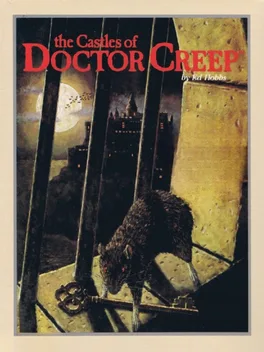
Explore thirteen different castles, overcoming a variety of puzzles and traps while you attempt to escape

A mystical journey through worlds that changed the concept of an adventure game. Lose yourself in fantastic virtual exploration, blurring the line between fantasy and reality, challenging your wits, instincts, and powers of observation like never before. The fantasy beckons... can you resist its call?
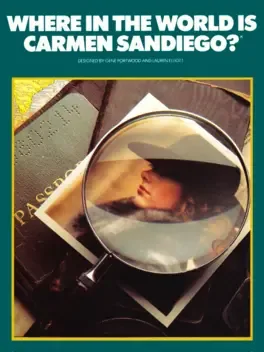
Woldwide crime wave! Acme Detective Agency hot on the trail of master thief Carmen Sandiego and her henchmen. Wanted: Detective to locate and capture Carmen and her gang. Must be hard working, independent, fun seeking individual willing to travel the world. No experience necessary. - Digitised graphics - Hundreds of cases - More animated sequinces - Play in 5 languages Don't forget your World Almanac. It is a gumshoe's best friend.
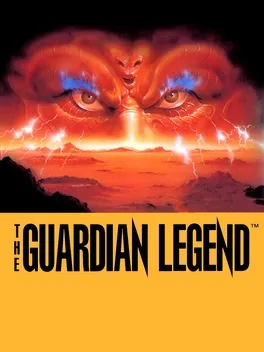
In The Guardian Legend, the player controls the female guardian of Earth, a "highly sophisticated aerobot transformer". The player's mission is to infiltrate Naju, a large planet-like object which aliens sent hurtling towards the Earth. While inside, the player must activate ten safety devices in order to initialize Naju's self-destruct mechanism and destroy the alien world before it reaches Earth. Five hostile tribes of alien lifeforms are vie for control of territories within Naju,and the player needs to fight through them to successfully activate the switches and escape.
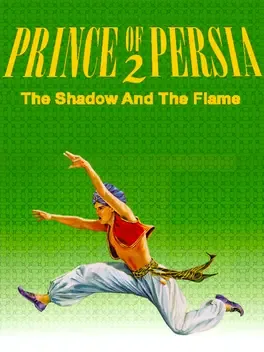
Prince of Persia 2: The Shadow and the Flame is a platform game released as the sequel to 1989's Prince of Persia. Prince of Persia 2 was published for MS-DOS and ported to Macintosh, Super NES, and FM Towns – a much shorter list of platforms than the first game. It was also available as a bonus that unlocks in the Xbox NTSC version of Prince of Persia: The Sands of Time.
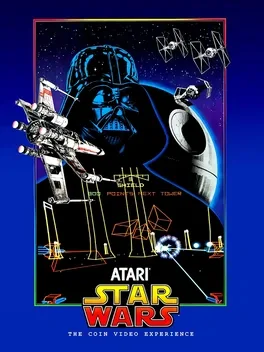
Star Wars is a first-person shoot 'em up based around the original Star Wars film. You take on the role of Luke Skywalker, aiming to destroy the Death Star - which, as any fan knows, involves attacking the 'weak spot' near the exhaust. To even get to this you have to pass swarms of TIE Fighters. Complete the game and it loops back around at ever-increasing difficulty. The game uses vector graphics, which allow lots of action at high speed on comparatively slow systems.
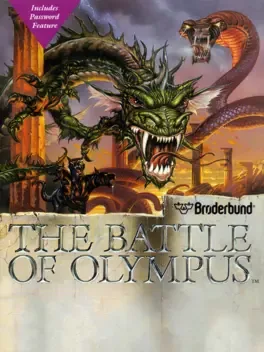
The Battle For Olympus was developed by Infinity and Radical Entertainment for the Nintendo Entertainment System and Nintendo GameBoy. It was released in 1988, the year after Zelda II was released. The game borrowed many concepts from the popular Zelda game, utilizing various special weapons and tools as the game progresses.
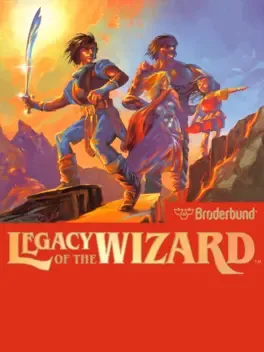
Play as five members of a family that set out to kill a dragon hidden within a giant maze.
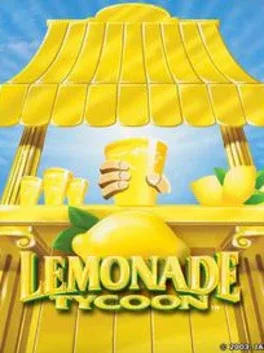
Lemonade Tycoon, first released as Lemonade Inc., is a Shockwave-based game. A free, limited version is available for online play at many sites or the full version with no time restrictions can be purchased online. The goal of Lemonade Tycoon is to sell lemonade for profit. While selling lemonade, players must look over many aspects of their business. Players decide on a recipe, set prices, and sell lemonade in a variety of locations. The game includes changing weather and news, which the player must compensate for. To overcome some factors, such as long lines and stock, players can buy upgrades. The packaged version included versions for PC, Mobile Phones, Windows Mobile Professional devices, and Palm devices. Lemonade Tycoon employs a concept called "Game-On" which allows users to transfer game saves from a Windows PC to a Palm handheld or Windows Mobile Professional device and back again to continue. While Lemonade Tycoon is compatible with multiple platforms, the game differs slightly on each. The Windows version allows more details and info because of a larger screen. Locations had a much bigger view and other versions had to deal with a smaller screen. They did not include as much information as the PC. Areas would be cut down so only a portion could be seen. Each platform, however, is not limited in usability and functionality. Lemonade Tycoon 2: New York Edition is also available on Mac OS X, published by MacPlay. The last update (1.1.9) was called Lemonade Tycoon Deluxe because it included some new levels and a slightly better UI. In 2009 Electronic Arts published an iPhone version of Lemonade Tycoon. GAMEPLAY: Game Modes Lemonade Tycoon includes three game modes; Career, Challenge and Champion. Career mode lets the player have a stand for as long as they want. Challenge mode had a 30-day limit to see how fast your stand can grow within the period of time. Stocks/Supplies In order to be able to sell lemonade, players have to buy supplies, which include ice, lemons, sugar, and cups. Sales and Advertisement The player has the option to advertise in Lemonade Tycoon. Every day, the player can pay an advertising fee with different choices in advertising being available. Advertising increases the number of potential customers. Upgrades Lemonade Tycoon features many upgrades that are available at different prices. Some reduce wait times, some improve visibility, some make ice, etc. Stand upgrades allow more storage and customer capacity. There are also employees, a cashier, and a clown, which charge daily for reducing wait times and increasing patience, respectively. Locations There are five different locations where one can move your stand. Some places are more popular than others. Each location has a different rent. Each location has satisfaction and popularity. Popularity changes as the player's stand gets more popular. Good satisfaction and advertising bring more customers. Satisfaction ensures that customers will come back to the stand. If there are short lines, there are good prices, the player serves all customers rather than them leaving, and the player has a good recipe, the player's customer satisfaction will go up. With the increase of satisfaction, customers will come back to a player's stand. Satisfaction and popularity are location based. They do not travel with you as you move from location to location. Game Factors There are many News Headlines that change how well lemonade is sold. Some headlines can improve your business and some that can hurt your business. Headlines change every game day and can sometimes only affect a single location. Weather affects how well lemonade is sold as well. Warm and hot days bring more customers to stand than on cold, rainy days. The weather changes each day and does not seem to follow predictable patterns. Lemonade Stock Exchange (LSX) The Lemonade Stock Exchange was an online feature that let one see how one's stand compared to others. RECEPTION: Awards Best Pocket PC Strategy Game (2002 Pocket PC Magazine's Best Products Awards) Applied uses Learning Planet, an educational website, created the original version of the game for teaching economics and resource management for its students. The LearningPlanet.com version of Lemonade Tycoon is visually different but functionally identical to the other iterations of the game.
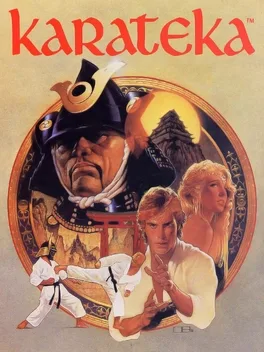
Karateka is a 1984 beat'em up video game by Jordan Mechner, and was his first game created while attending Yale University. It was originally programmed for the Apple II, and was later ported to several other home computers and early gaming consoles. The game was published in North America by Brøderbund, and in Europe by Ariolasoft. The player controls an unnamed protagonist who is attempting to rescue his love interest, the Princess Mariko, from Akuma's castle fortress. The game exhibits a combination of a side-scrolling platform and fighting game elements. The player uses punches and kicks to defeat Akuma and his guards and make his way deeper into the fortress. The game, as with most at the time of development, lacked checkpoints or the ability to save the game, making it a challenge to complete in a single sitting. Karateka has been well-received, particularly for its realistic animations used for the game's characters. The game was considered a breakthrough success for Mechner, and would eventually result in his development of the Prince of Persia franchise. A high-definition remake, spearheaded by Mechner, was released as a downloadable title for the Xbox 360, Microsoft Windows, PlayStation 3, with planned ports for the iOS and Wii U systems.
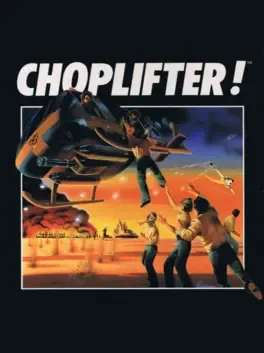
Choplifter is military themed scrolling shooter where you play as a pilot. Take off from your home base and fly across a horizontally-scrolling playfield of rugged terrain to reach the enemy Bungelings' barracks. There, you must land and rescue a group of helpless hostages and return then to your base. To hinder your mission, the enemy will attack with an array of armaments including tanks, jets, and dangerous air mines. To complete a perfect game, you must rescue all of the 64 hostages.
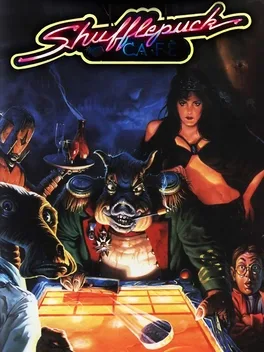
Shufflepuck Café is a computer air hockey game developed by Christopher Gross, Gene Portwood and Lauren Elliott for Brøderbund. There are two game modes. The player can compete in a tournament, playing against opponents who visit the Café, or can practice against each opponent to find out his/her/its weakness in a single-player match. There is a general storyline behind the Amiga version of the game in which the player is an inter-galactic salesman whose spaceship has broken down. He needs to find a telephone to call the breakdown service and get the spaceship fixed. Shufflepuck Café is the nearest place for miles, so he goes in to use their telephone. The main eight Shufflepuck players are standing in his way and will not let him get to the phone until he has beaten them all. Once all are defeated, the player gets in his spaceship and flies off into the distance.
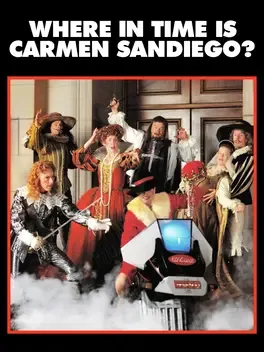
Carmen Sandiego and her gang are loose once again, and it is the players job to capture her! This time around the player not only has to find where she is, but also when she is. Traveling to various locations, they need to assemble clues by questioning witnesses and searching locations to close in and capture Carmen Sandiego. Included with the game is The New America Desk Encyclopedia to help make clues more meaningful (and act as a form of copy protection!).
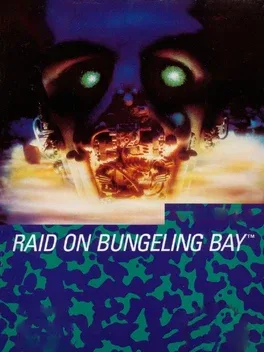
Raid on Bungeling Bay has the player controlling a helicopter which is on a mission to destroy everything that moves. The only ally is the carrier, which is where the player begins at each level and may return to for repair and pick up bombs, as long as the player manages to protect it from being destroyed. The main goal in each level is to destroy a factory, which requires a steady increasing amount of bombs. Enemy forces include ships, planes, tanks, anti-air guns, and eventually, a large battleship.
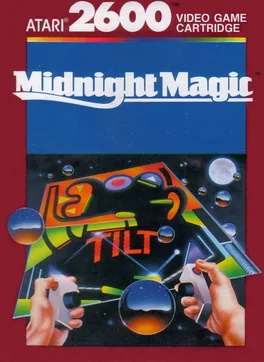
Midnight Magic utilized the Atari 2600 joystick for performing simulated pinball functions, such as activating the flippers and shooting the ball. Moving the joystick controller down pulls the pinball machine plunger back while pressing the joystick button shoots the ball into the playfield. The left and right flippers are activated by moving the joystick controller left or right. Hitting all five drop targets at the top of the table increases the bonus multiplier (2x, 3x, and so on). Extra balls can be earned when hitting the rollover targets at the top left and right corners of the table when the bonus multiplier is activated.
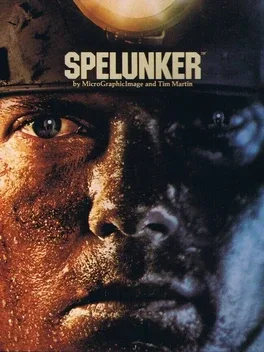
A miner has to find the exit to a world of wonders that is deep in the ground. During his journey he has to collect bombs to destroy rocks in his way, collect keys to open doors and pick up little potions that refresh his timer. Treasure chests can be opened for bonus items.
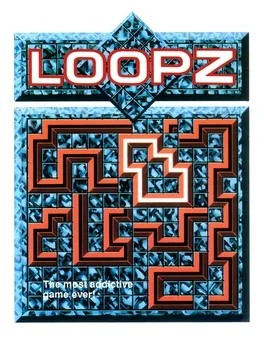
Loopz is a puzzle video game originally designed and programmed by Ian Upton for the Atari ST in 1989. He previously worked as head game designer for Audiogenic, who acquired exclusive rights to the game, then in 1990 arranged for Mindscape to publish it for computers in North America and consoles worldwide. The Nintendo Entertainment System version (programmed by Bits Studios) and the Game Boy version (programmed by Argonaut Software) were released in 1990. Audiogenic published versions of the original game for the Acorn Electron, BBC Micro, ZX Spectrum, Amstrad CPC, Commodore 64, Atari ST, Amiga, and IBM PC in 1990 and 1991.